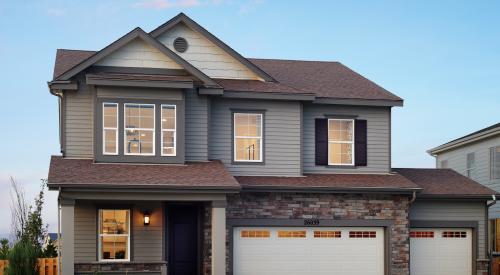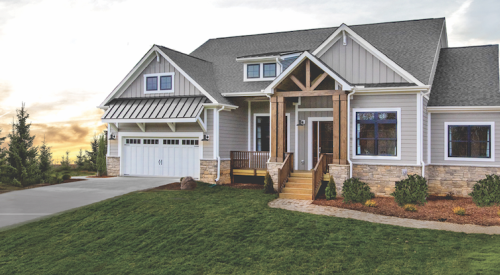|
 |
Although both projects have been successful, their markets were not what they intended; and tales of the "surprise buyer" are not uncommon in the industry. It takes a comprehensive research effort done well in advance to accurately nail down buyer profile, and numbers don't tell the whole story.
Builders need to investigate other options the targeted buyer might have in the marketplace, says Brad Clason, a Coatesville, Pa., consultant. For example, are competing communities closer to work, shopping and entertainment? "If you're going to build townhouses in a more rural location, you'd better be price-sensitive if you want to get that younger buyer out there," says Clason. And it's not enough to look only at new-home comparables; also study the resale and rental markets and how they relate to employment centers and transportation corridors.
Brenda Desjardins, principal of New Home Marketing Services in Annapolis, Md., says that given what's been happening in the marketplace today, builders would be wise to check out resale comparables.
 |
Builders usually don't start research early enough, says Andy Detterline, a consultant based in Rose Valley, Pa. "Once they buy a piece of ground, it's really too late," says Detterline. "They should be figuring out where the holes are in their market and looking for opportunities there rather than buying something that's on the market, then doing a study to see if it works."
You've got to do much more than assess the sales rate of existing jobs — and do it thoroughly, she says. "The most voluminous study done in a rush, or by a research person who does not know the area like the back of their hand, can be torpedoed by one missing variable," warns Detterline.
The Delaware story
 |
| Consultant Andy Detterline warns that key variables can be overlooked if research is done hastily or by someone who doesn't know the market. |
"What the market research missed was that Delaware's real-estate taxes were the lowest in the country, while New Jersey's and Pennsylvania's were the highest," she says. "Retirees concerned about living on a fixed income could move an hour away, get more house for their money and save $5,000 to $10,000 in taxes each year. And they did just that — in droves, driving prices up nearly 60 percent over the life of the job."
The other factor overlooked was a new zoning district in northern Delaware that would make it impossible to build a competing job closer to the aforementioned "tax refugees." Detterline knew about the ordinance because she was helping her client evaluate raw ground for purchase in the Wilmington area.
The point is that builders need to study demographics; housing prices and supply; new zoning districts; and a multitude of other factors. "Unless you can understand trends and figure out where buyer motivation is headed, there are always going to be surprises," says Detterline. "You have to look at things that may be coming out of left field."
Expect the unexpected
 |
Then there are times when the market adapts itself to the product being offered. At The Residences at Bulle Rock in Havre de Grace, Md., single-family homes with first-floor master bedrooms were expected to attract pre-retirees and retirees. But families, too, loved the idea of not having to deal with lawn-mowing and other exterior maintenance. They account for 15 percent of home sales at Bulle Rock.
"Sometimes the sense of community is more important than the floor plans," says Desjardins, who conducted the original market study for Bulle Rock. "What the developers are dealing with now are property management issues and how to manage the buyers' expectations. They have a big community center that was designed for older adults, yet there are all these people with kids that want to run around the pool."
Indeed, in a large planned-unit development, adapting to change is usually part of the developer's business plan. "They know they're going to start with one buyer profile and then have to adapt throughout the community," she says. A builder also needs to be sensitive to market shifts that can alter buyer profiles. Take condominiums, for instance, which have traditionally been geared to first-time buyers and empty nesters. "First-time buyers aren't necessarily interested in condos anymore — they want to go right into a townhome or a single-family home," Desjardins says. "And they're not so willing to wait and move up; they want it right away. So a lot of single people are buying smaller single-family homes."
Roll with the changesIf builders are able to adapt to a "surprise buyer" scenario, they can actually expand their buyer profile rather than limiting it. "It can be an opportunity rather than a negative," says Desjardins. And if their home designs are flexible enough to appeal to more than one buyer segment, so much the better.
 |
When sales started, however, Bennett found that singles, dinks and single parents were latching onto the initial release of smaller houses. "They're well-laid out and on small lots, so there isn't much to maintain," says Van Natter. "People with active lifestyles who ski one weekend and camp the next, [or] were starting a business, or had just gotten divorced and had a child at home were all interested in those homes."
Sometimes it takes an additional investment on the builder's part to cope with the unexpected buyer. About 50 percent of prospective buyers at City Square are "the baby boomer/empty nester/retiree," says Lenette Hewitt, vice president of sales and marketing in Barratt American's Carlsbad, Calif. office. Those buyers are particularly concerned about Plan Three, a four-story unit. They love the square footage (1,906), the vaulted ceilings and the lock-it-and-leave-it lifestyle, says Hewitt, but climbing three flights of stairs is another matter. So in the next phase of the project, Barratt is adding, as a standard feature, private elevators to Plan Three at a cost of $25,000 per unit.
Hewitt thinks actual buyer profile (versus what's expected) has to do with location and market demand. "When you're in a situation where people are just happy to get a house or condo in a downtown environment, they're more tolerant of [a high-density] product," she says. "But because City Square is one of the first developments in downtown Escondido, buyers are not as conditioned and willing to accept density because they're not surrounded by it."
Malibu, Calif., marketing consultant Sandra Kulli adds: "When the unmet need in the consumer is met in a way that is palpable or tangible, they'll pick a floor plan that may not seem right for them in order to be in the place they desire."
 |
| Feedback from Realtors and residents is a valuable tool in a builder's research, says consultant Sandra Kulli. |
Even in a down market, thoughtful research — both quantitative and qualitative — can have an enormous payoff when the community opens two years later. By "thoughtful research," Kulli means spending time with the target audience, and on more than a phone questionnaire. "Workshops with existing homeowners can give you great insight into improvements to make for a new community," says Kulli.
|












